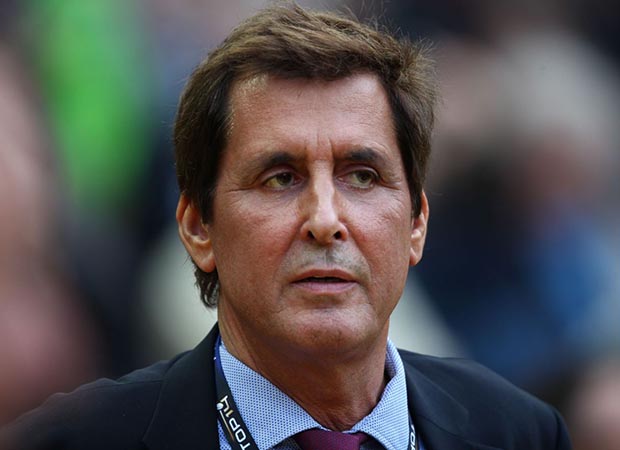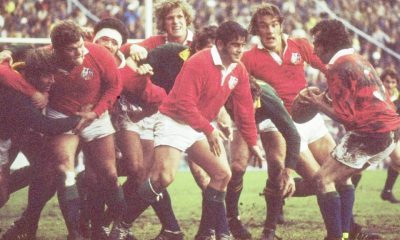
 When Max Guazzini bowed out six years ago, Stade Francais had good reason to feel as safe as the Central European Bank. After all hadn’t their new owner a licence to print money?
When Max Guazzini bowed out six years ago, Stade Francais had good reason to feel as safe as the Central European Bank. After all hadn’t their new owner a licence to print money?
The Parisian club’s envied reputation as a flamboyant mixture of the Moulin Rouge and Madison Square Garden could hardly have passed into safer hands after ‘Mad Max’ had made his final exit, stage left. Thomas Savare’s fortune came from the family business of designing and printing bank notes for the Eurozone.
He poured €30m of his own money into a losing team to such good effect that within four years of fighting relegation they were lording it over the rest. Regaining the French title afforded a grinning Savare the privilege of trying to lift the mightiest trophy to be found in any sport, the Brennus Shield.
Now, less than two years later, Stade Francais are under sentence of death, their execution set for May 6. They will then go the way of, among others, the New York Giants and the Brooklyn Dodgers and cease to be.
When Savare and his presidential counterpart at Racing, Jacky Lorenzetti, made their stunning announcement, they really ought to have been wearing black caps. There are many of a Stade persuasion who refuse to buy the party line of ‘fusion’, adamant that it was less a merger, more the demise of their club.
The players were the last to know. One, the France international Djibril Camara, spoke of feeling ‘as if I was told my mother had died’. Savare tweeted that the fusion was a ‘no-brainer’ whereupon Guazzini issued a counter tweet claiming there was ‘no justification’ for Stade’s disappearance.
This is not any old club but one whose visionary zeal made them the peerless purveyors of pizzazz. Guazzini’s glitzy brand of showbiz did for rugby at the start of the 21st century what Phineas T Barnum did for the circus as mass family entertainment at the start of the 20th.
A latter-day Pied Pipe, Guazzini hired the Stade de France and filled it very nearly to the brim by slashing ticket prices for a family audience. The transfer of four domestic matches from their cramped base across the road from the Parc des Princes in south-western Paris brought crowds of 301,923. Almost overnight they became the best supported club in Europe.
Guazzini’s flair for the theatrical went beyond hiring a troupe of can-can girls from the Moulin Rouge and staging mock medieval battles between knights on white horses. The circus swirling around those occasions had to be seen to be believed and often the players would be as astounded as the fans.
Ollie Phillips, the England Sevens captain whose three seasons at Stade coincided with Stade’s staggering productions, remembers the first near-80,000 extravaganza, against Perpignan in October 2008. “As we came out of the tunnel, all we could see were about 40 dancers from the Moulin Rouge all scantily clad,” he said.
“Hask (James Haskell) and I were both thinking the same thing: ‘What’s going on here?’
“And then we saw this huge wrestling ring which had been suspended above the pitch. While the wrestlers were throwing themselves about, two guys were jumping over the ring on motor bikes.
“That was Max, below, creating family fun but underneath it all was the bedrock of an incredible rugby team.
“I’m totally flabbergasted,” added Phillips. “There is a massive rivalry between these two incredible clubs and so much pride in their identity. In football terms, it’s like Liverpool and Everton or the Manchester clubs merging into one.
“I don’t think any of those clubs will merge any time soon. In French rugby this has been a long time coming because the business models they operate are not sustainable. The clubs are funded by wealthy entrepreneurs out to win trophies as fast as possible. It’s all very short-term.”
In between pioneering the jersey as a fashion item, Stade kept reaching for the sky. When almost 80,000 turned up for a Heineken Cup tie against Harlequins they found that chariot races and swooping eagles had been added to the dancing troupe and the knights on horseback.
As the players lined up for kick-off wondering whether someone had forgotten the ball, an eagle floated down from on high with the missing item in its claws.
The referee, Ireland‘s Alan Lewis, had never seen anything like it. “Max had a flair for bringing rugby to the masses, of making it more affordable with cheap seats, Ryanair-style,” he said. “It inspired the opposition as much as Stade Francais. As a referee any time you opened your fixture book and you had Stade you couldn’t wait for the day to come.”
They paved the way for Harlequins’ annual Christmas event at Twickenham, inspiring them to do in London what Stade had done ad infinitum in Paris.
And to think that all too soon the final curtain will come down and the most outrageously colourful club the game has seen will be no more.


British and Irish Lions
From Leicester reject to a British and Irish Lion: Tommy Freeman’s stellar rise
Latest News
Steve Diamond: Franchise league a good idea

International Rugby
Touring Japan with Wales is my goal says Dan Edwards























You must be logged in to post a comment Login